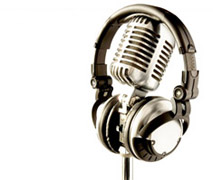Translation memory (TM), computer-assisted translation (CAT) and machine translation (MT) tools are widely used for text-based applications, but spoken language communication is largely neglected. Though many business communications employ speech as the primary mode of interaction, the status quo of current localization business models and technologies remains limited to written applications. However, emerging technologies enable spoken inter-language communication through TM leverage, terminology databases, and computer-assisted interpretation (CAI), all of which point to move toward machine interpretation (MI).
The orality of communication
Of the 6,912 known living human languages, 2,261 have writing systems. Comparatively, all languages have either an oral or manual (signed) tradition. Oral and manual systems of communication define in part what it means to be a human being. Writing systems have resulted from attempts to catalog and capture spoken language — a portrait of a natural language at a given moment in time. Like all portraits, written systems are an imperfect rendition imperfectly attempting to capture the reality, richness and myriad dimensions of language.
Even Shakespeare’s plays, deemed to be some of the world’s greatest written works, were originally a combination of visual and oral mediums, destined not to be read, but to be seen and heard. We only need to consider the fact that the human ear can perceive between 300,000 and 400,000 distinct emotional states through tone of ...
Read more after login
tekom members can log in directly with their "My tekom" access data.
You are not yet a tekom member, but would like to read one or more articles in full? Then you have the opportunity to register on the internet portal of the technical journal 'tcworld' without obligation. Once you have registered, you can select any three specialist articles and view them in full for a period of two months. The selection will then be deleted and you can select three new articles for the next two months.
As a tekom member you benefit from the following advantages::
- Online access to all articles of the trade magazine 'tcworld magazine'
- Exclusive specialist articles from all areas of technical communication
- Regular new articles from over 300 authors
- The technical journal 'tcworld magazine' as a printed edition
- Reduced admission prices to tekom conferences
- Membership fees for tekom publications
- Access to 'my tekom', the web forum with job offers / job requests, appointments, expert advice, service provider file and much more
Login
Registration
Promised: The trade magazine 'tcworld magazine' is the best we have. And we don't make the choice easy for ourselves. Every month, the editorial staff of the technical journal 'tcworld magazine' publishes the latest articles by renowned authors. This demanding selection is available exclusively to members of tekom (as usual, including the printed edition).
The trade magazine 'tcworld magazine' stands for intelligently prepared specialist articles, texts written to the point, informative content, surprising insights, international perspectives and communicates technical communication in an understandable, fast, clear and uncomplicated way - exclusively for you.
